Prince Philip dead at 99: ‘He has been my strength all these years’
He was at Queen Elizabeth’s side through a tumultuous reign, with a protective focus on duty, responsibility and loyalty
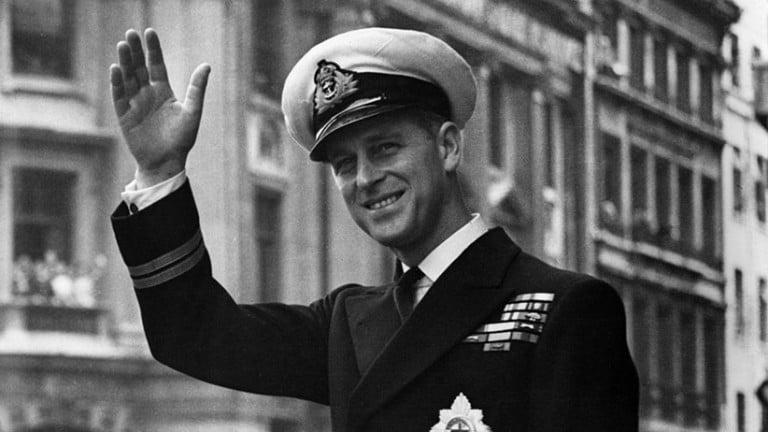
Prince Philip, Duke Of Edinburgh waving through the open roof of a car in 1948. (Central Press/Getty Images)
Share
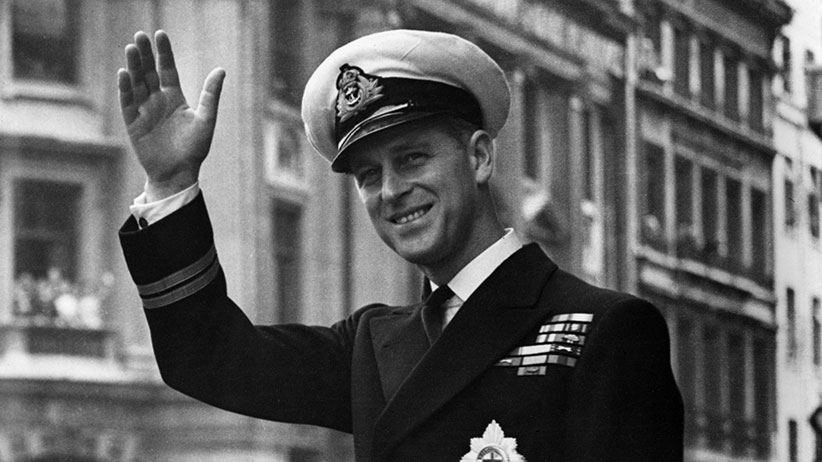
For more than seven decades, Prince Philip occupied the ultimate supporting role, walking a careful two paces behind his younger wife, Queen Elizabeth II, as she carried out her duties as monarch. He stood tall, hands clasped behind his ramrod-straight back, as he accompanied her faithfully on every one of her 271 trips abroad, including 23 to Canada. It was a protective focus on duty, responsibility and loyalty that his grandson, Prince William, readily acknowledged: “He never takes the limelight, never oversteps the mark.”
Prince Philip, Duke of Edinburgh, died today, age 99. In a statement from Windsor Castle, royal officials stated: “It is with deep sorrow that Her Majesty The Queen announces the death of her beloved husband, His Royal Highness The Prince Philip, Duke of Edinburgh. His Royal Highness passed away peacefully this morning at Windsor Castle.”
Philip had spent four weeks in hospital, being treated for an infection and heart condition, before returning to Windsor Castle in mid-March.
READ MORE: Prince Philip dead at 99: Reaction from Canada and around the world
He married Elizabeth in 1947 in the first glittering royal ceremony after the Second World War and was by her side through a tumultuous reign that saw the final decline of the British Empire and the rise of the Commonwealth, the abandonment of outdated traditions (such as debutante presentations) and rise of a more multicultural, tolerant society.
Together, they witnessed the lavish weddings of their children and grandchildren, and endured more than a few scandals and marital breakdowns within their family—as well as a huge fire that devastated Windsor Castle, their favourite residence outside London. “Together they’re a great couple,” Prince William said.
Yet Philip was not the consort the royals had initially envisaged for the young Princess Elizabeth, the woman catapulted into the position of future occupant of the British (and Canadian) throne when her uncle, King Edward VIII, abdicated in 1936 so he could marry the twice-divorced Wallis Simpson. Her parents, King George VI and Queen Elizabeth, expected her to choose a British aristocrat from the same socio-economic milieu as the House of Windsor, a person of wealth and power. Instead, Elizabeth fell head over heels for a foreign prince whose brusque manner spawned so many gaffes that he created a word, “dontopedalogy,” for putting one’s foot in one’s mouth.
One thing Philip possessed was an impressive pedigree, with ties to royal families in Germany, Greece, Denmark and Russia, as well as to the House of Windsor itself. His mother was Princess Alice of Battenberg, a great-granddaughter to Queen Victoria, making him a distant cousin to his bride. In 1903, at the age of 18, the profoundly deaf princess married Prince Andrew of Greece and Denmark, son of Greece’s king, grandson of Denmark’s king. The couple had four daughters before Alice gave premature birth to Philip on the dining room table of their villa on Corfu on June 10, 1921.
A little more than a year later the family fled Greece on a British warship after Andrew was court-martialed and nearly executed after a disastrous military loss to the Turks. Baby Philip, then sixth in line to the Greek throne, slept away the crisis in a fruit crate. He never lived in Greece again and would never be fluent in its language. The family settled in Paris, poor by royal standards, but helped by richer relations.
In May 1930, his mother had a mental breakdown, in part over the execution of so many family members during the Russian Revolution, and was committed to a Swiss sanatorium. Within 15 months, Philip’s four sisters all fled the unhappy family home by marrying German princes. His father decamped to Monaco for a life of gambling and mistresses, leaving Philip, then 10, adrift.
“The family broke up,” Philip told biographer Gyles Brandreth matter-of-factly. “My mother was ill, my sisters were married, my father was in the South of France. I just had to get on with it. You do. One does.”
Alice’s British-based family took over his care, with the biggest roles for his maternal grandmother, who lived at Kensington Palace, and his uncle George, marquess of Milford Haven. The family included him in major royal events, including a London wedding in 1934 where the 13-year-old met his future wife, then an eight-year-old bridesmaid to his cousin, Princess Marina of Greece, who married Elizabeth’s uncle, Prince George. (Nobody said this family tree was simple.) He spent summers at relatives’ castles and stately homes.
His teen years were marked by sorrow. In 1937, his sister Cecilie and most of her young family were killed in a plane crash. Philip, then 16, led the funeral procession, accompanied by their German relations, many of whom wore Nazi uniforms. The next year, his uncle George died of brain cancer.
Luckily, by then Philip was ensconced at Gordonstoun school in Scotland, founded by German headmaster Kurt Hahn, an outspoken critic of Adolf Hitler. The young prince shone under Hahn’s strict regime of fitness, enterprise, self-discipline and public service, and rose to be head boy in his last year. “Philip is a born leader,” wrote Hahn in his final school report on the prince. “He will need the exacting demands of a great service to do justice to himself. His best is outstanding—his second best is not good enough.”
In 1939, though he was second in line to the Greek throne, the 18-year-old blond prince opted for a career in the British military, joining the Royal Navy as a cadet at its college at Dartmouth. It was a family tradition: his grandfather, Prince Louis of Battenberg, rose to head the Royal Navy as first sea lord, while his uncle, Earl Mountbatten of Burma, would later claim the same position.
As war clouds gathered, the young cadet was tasked with occupying two princesses, Elizabeth, 13, and Margaret, 9, as they visited Dartmouth with their parents. Elizabeth was smitten. He looked “like a Viking god,” she told a friend.
A few months later, Britain and Germany were at war, leaving Philip on one side of what soon became a global conflict, and his three surviving sisters on the other. Philip served in the Mediterranean, rising from the rank of midshipman to first lieutenant of a destroyer. In 1941, his bravery was noted in official dispatches.
In 2003, a former sailor living in Canada revealed that Philip’s quick thinking saved their destroyer, HMS Wallace, during a nighttime Luftwaffe bombardment in the 1943 invasion of Sicily. Philip set a raft alight to mimic debris and threw it overboard, and that fooled the Germans into thinking the ship, now stationary and dark some distance away, had been sunk. It was, in the lingo of the day, a “good war” for the dashing young prince.
But there was some time for love as well. During his wartime leaves in Britain, Philip’s relationship with Elizabeth slowly deepened into romance. A year after witnessing the Japanese surrender in Tokyo Bay, Philip proposed to the 20-year-old princess in September 1946. He had little money and few possessions, yet the future Queen didn’t care. At the urging of her parents, they kept the engagement a secret for 10 months to be sure of their decision, during which time Philip became a naturalized British citizen. He took the name Philip Mountbatten, the name his mother’s family adopted when their German title of Battenberg was extinguished during the First World War.
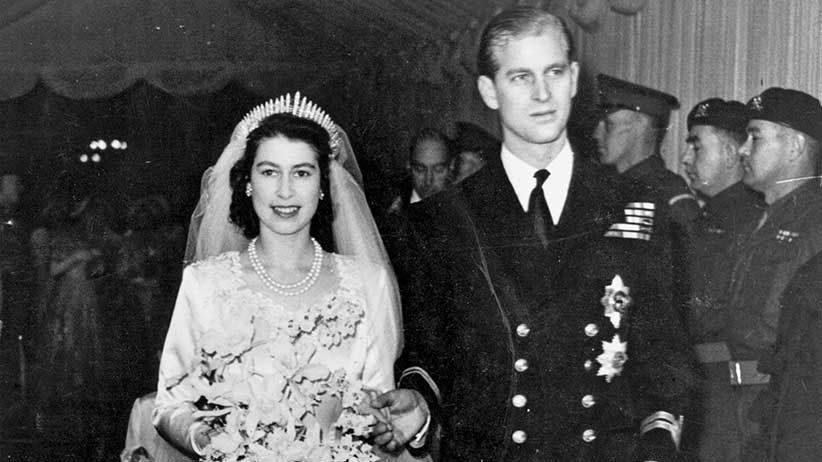
On Nov. 20, 1947, the couple married in Westminster Abbey, with Philip given the title of Duke of Edinburgh to mark his new role. Its pomp and pageantry were a rare break in the postwar austerity that had gripped Britain.
Unlike Elizabeth, Philip had few close family members on his side of the aisle. His father had died in Monte Carlo in 1944, leaving his son a signet ring and a few mouldy suits. His sisters and their German husbands, who had served the Nazi government with varying degrees of enthusiasm, were personae non gratae. His mother, who gave her son the last of her jewellery to make Elizabeth’s engagement ring, did make the trip from Athens, the city where she settled after she was released from the Swiss sanatorium in 1937. (Alice died in 1969 in Buckingham Palace and is buried in Jerusalem, named Righteous Among the Nations by the Israeli government for hiding a Jewish family in her home during the German occupation of Greece.)
The newlyweds settled into married life—Charles was born in 1948, Anne in 1950—with Elizabeth undertaking royal duties while Philip’s naval career flourished. For the first time since childhood, he had a home and a family of his own, and while the couple were never ones for public displays of affection, each made their happiness clear. Even during their honeymoon, Philip informed his mother-in-law that his wife “is the only ‘thing’ in this world which is absolutely real to me,” while Elizabeth wrote of being “blissfully happy.”
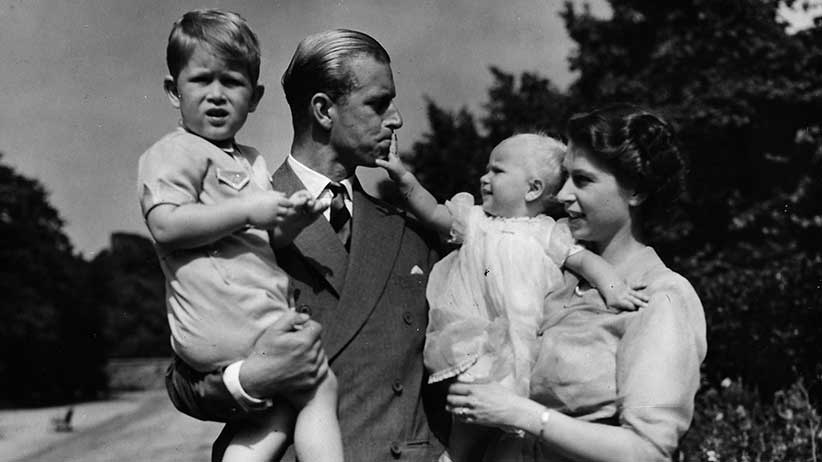
The repose would be brief. The king’s health declined, ruined by heavy smoking and wartime stress, and the young couple took on more duties.
On Feb. 6, 1952, King George VI died. The world focused on the 25-year-old monarch, now Queen Elizabeth II, but Philip’s life was also in turmoil. “He looked absolutely flattened, as if the world had collapsed on him,” recalled Philip’s Australian-born secretary and friend, Michael Parker.
While the new sovereign grappled with her duties, Philip pondered his own role. There was no obvious model. Queen Victoria’s consort, Prince Albert, had been intimately involved in affairs of state, but that was now constitutionally off-limits to Philip. The old palace guard, many of whom had served the new Queen’s father and grandfather, were suspicious of her forthright, impatient spouse and his modern ideas, and some saw him as a threat.
“Philip was constantly being squashed, snubbed, ticked off, rapped over the knuckles,” Parker recounted. “It was intolerable. The problem was simply that Philip had energy, ideas, get-up-and-go, and that didn’t suit the establishment, not one bit.” Even his own mother-in-law, the Queen Mother, disparagingly called him “the Hun” to friends.
The slights added up. At the first state opening of Parliament, organizers swapped the consort’s throne out for an ordinary chair. When Elizabeth sided with her advisers and decided the royal dynasty would remain the House of Windsor rather than take Philip’s name, Mountbatten, he was deeply upset. “I’m nothing but a bloody amoeba,” he complained. “I am the only man in the country not allowed to give his name to his own children.”
For all the turmoil, Philip’s devotion to his wife was never doubted by their closest friends and family. “When he gave Elizabeth his love and loyalty, he gave them to her for life. He has not deviated from that. The course that’s set is the course that’s followed. Philip is not a man to be deflected,” John Knatchbull, husband of Philip’s cousin, told a biographer.
At Elizabeth’s coronation in 1953, the handsome, athletic prince knelt before his wife, placed his hands between hers, and vowed, “I, Philip, Duke of Edinburgh, do become your liege man of life and limb, and of earthly worship; and faith and truth I will bear unto you, to live and die, against all manner of folks. So help me God.”
Never one to brood, the Duke of Edinburgh eventually shook off the insults and channelled his energy into an eclectic variety of pursuits. A natural athlete, he became one of the best polo players in the world; he piloted helicopters and jets. “He’s always been thinking ahead,” Prince William said of his grandfather’s myriad interests. With his old headmaster Kurt Hahn, Philip created the Duke of Edinburgh Award scheme for youths in 1956 and was involved with the World Wildlife Fund since its beginning in 1961.
He called himself an innovator rather than a royal rebel, yet his changes, both large and small, transformed a stuffy, outdated institution into an efficient, professionally run organization. “He is always ready to offer advice, if asked, and it’s usually very sensible,” said one former private secretary to the Queen. “The tougher the going, the better he is.”
When fire devastated Windsor Castle in 1992, a blaze that coincided with a downturn in the family’s popularity, Philip was in charge of its rebuilding, a task completed ahead of schedule, under budget and without taxpayer funds.
Philip’s intellectual curiosity opened new frontiers and new opportunities for the Queen. “She is very shrewd but she had a protective shell around her, and he brought her out of it,” a diplomat told biographer Philip Eade.
The prince mitigated her natural cautiousness, which had been reinforced by growing up in a rarefied world: privately tutored, isolated during the war. Landmark decisions—paying taxes, suggesting Charles and Diana divorce—were only made with his backing. “The Queen is not confrontational,” insiders told royal watcher Robert Hardman. “He helps her make up for that. Sometimes he gives her the impetus to take a stand.”
Even his outfits befit his position as consort. “Through his clothes he’s demonstrated that he’s the ultimate wing man, but can take the centre stage when required. He’s about understated elegance, never exaggerated. That’s the true meaning of classic British style,” Dean Gomilsek-Cole, head of design at Turnbull & Asser, which created many of the duke’s outfits, told the Telegraph. His athletic figure, maintained by the legendary Royal Canadian Air Force athletic program, barely changed over the decades.
RELATED: Dressed to impress: The classic uniforms of Queen Elizabeth II
Philip was famous for his love of gadgets and innovations—he bought one of the first personal computers on the market and ran the family’s vast private estates on a commercial basis. Indeed, each summer, he and Elizabeth only moved into the main castle at Balmoral in Scotland on the third week of their vacation, so as to not impede the profitable tourist season.
The workaholic prince was also a prolific writer, whose 14 works include a volume of bird photography and a book of written exchanges on science and religion with the Anglican dean of Windsor. His personal library is said to hold more than 10,000 volumes, virtually all of which he has read. He was also an artist, preferring oil painting to Charles’s more famous watercolours, and he designed jewellery for his wife.
On the royal trail there was both kindness and confusion, with countless stories of him lifting youngsters over police barriers so they could deliver bedraggled bouquets to Elizabeth, as well as flashes of a personality “marred at times by impatience and intolerance,” as his school headmaster noted.
That came out in the form of an uncivil tongue that ranged from rudeness to sexism and racism. “You look like you’re ready for bed,” he told the traditionally dressed president of Nigeria in 2003. “If you’re near that music, it’s no wonder you’re deaf,” he told a group of deaf students standing near a steel band. Canada did not get off scot-free. “We don’t come here for our health. We can think of other ways of enjoying ourselves,” he snapped in 1976. During a 1986 visit to China, Philip told a visiting British student that he’d go “slitty-eyed” if he stayed there much longer.
Over the years, tabloids have splashed rumours of Philip’s infidelity across their front pages, especially during the early years of the Queen’s reign, as she spent more time with officials than her husband. Biographer Gyles Brandreth tackled the subject head-on in his semi-approved book on their marriage, even interviewing purported mistresses on the record. His conclusion: Philip has had intense friendships with intelligent and beautiful women, but he found no proof of adultery.
As palace press secretary Dickie Arbiter said, “Prince Philip has always liked window shopping, but he doesn’t buy.” Philip himself said, “How could I? I’ve had a detective in my company, night and day, since 1947.”
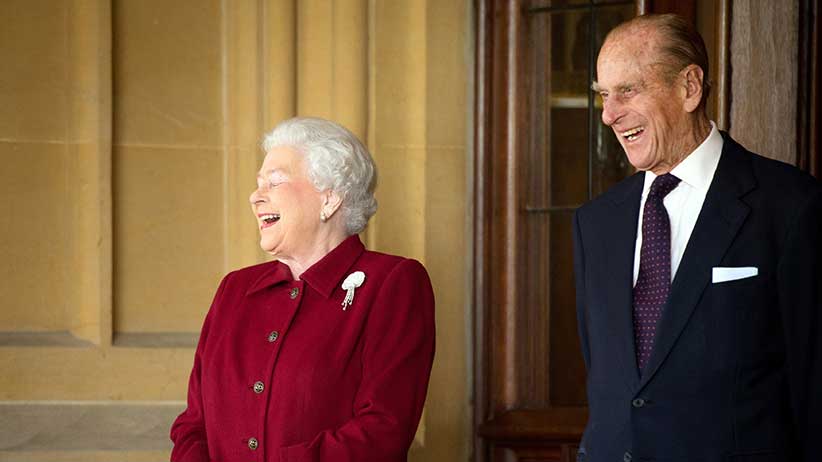
The truth will be revealed long after their deaths, when official biographers delve into their personal letters and diaries. What’s beyond doubt is that the Queen and Philip always enjoyed each other’s company. Not even the greatest actor could fake their casual, comfortable sideways glances, small remarks and laughs for so many decades.
His relationship with his oldest son, Charles, was more complicated. Philip’s practical, self-sufficient, often impatient persona didn’t mesh with Charles’s more romantic, contemplative one. In 1995, during his contentious split from his first wife, Diana, Charles went public with what he perceived as his father’s “belittling” and “bullying” attitude, and a noticeable frost settled between father and son. Their relationship improved after Charles settled into a happy second marriage with Camilla Parker Bowles.
In contrast, the Duke of Edinburgh enjoyed warm relationships with his three other children—Anne, Andrew (born 1960) and Edward (born 1964)—as well as his eight grandchildren and 10 great-grandchildren. In 1997, when Prince William and Prince Harry hesitated over whether to walk behind their mother’s coffin at her funeral, it was their grandfather who helped them decide by offering, “If you like, I’ll walk with you.” In 2004, Prince William said of his grandfather that he “will tell me something I don’t want to hear and doesn’t care if I get upset about it. He knows it is the right thing to say.” More recently, Philip taught Edward’s teenage daughter, Louise, the art of carriage driving (Philip compiled the official rules for the competitive sport), watching proudly as she took the reins in public for the first time.
Always aware of his royal duties, Philip regularly racked up 600 engagements a year well into his 60s and 70s, opening hospitals, visiting regiments and headlining conferences. Yet old age took its toll. At Christmas in 2011, he underwent an emergency coronary angioplasty; he spent the Queen’s Diamond Jubilee celebrations in hospital with a urinary infection; in 2013, he was admitted to hospital for exploratory abdominal surgery. “I’m sorry I’ve forgotten your name, I forget everyone’s name nowadays,” he told a garden party guest in June 2015. By his 95th year, he’d slowed down to 219 engagements.
Finally, three decades past the normal age of retirement, the oldest royal consort announced his retirement in May 2017, although the Palace said he may still “choose to attend certain public events from time to time.” On the same day as the announcement, Philip accompanied the Queen to a service and lunch for members of the Order of Merit. “I’m sorry to hear you’re standing down,” said mathematician Sir Michael Atiyah. “Well, I can’t stand up much,” the duke quipped. By Buckingham Palace’s count, Prince Philip carried out more than 22,000 solo engagements in Britain alone, and thousands more at the Queen’s side.
His retreat from public view was complete—aside from attending family gatherings, he spent much of his last years on royal estates, which he continued to oversee. His disciplined temperament never changed, however. He walked beside his wife at Prince Harry and Meghan Markle’s wedding in May 2018, showing no signs of having a hip replacement just six weeks prior (such was his recovery that no one is sure which hip was replaced.)
In early 2019, his independence was curtailed after he crashed into another vehicle while leaving the Sandringham estate in Norfolk. Though his Land Rover flipped on its side, he escaped injury while a passenger in the other car broke her arm. The authorities decided not to prosecute after Philip, then 97, apologized to the occupants of the other vehicle and voluntarily surrendered his driving licence.
Then, in early 2020, as COVID-19 spread around the world, Philip and Elizabeth retreated into “HMS Bubble,” the nickname given by their staff to a coronavirus-free zone established to protect the couple, who spent most of the pandemic at Windsor Castle. In early January 2021, they were vaccinated against the novel virus.
Philip’s death sets in motion the final chapter of his long life: his funeral. Ever the practical man, he approved every detail. Rejecting the Queen’s offer of a grand state funeral in London, his own plan, codenamed Forth Bridge, is for a simpler service in the Gothic splendour of St. George’s Chapel, within the towering walls of Windsor Castle.
Reportedly, his only special request is that his coffin be borne on the gun carriage used to carry Queen Victoria, his great-great-grandmother, during her funeral in 1901. He’ll be buried in the royal cemetery just outside Windsor Castle.
Of all the accolades and odes being showered on Prince Philip, perhaps the best was from his life partner, Queen Elizabeth II. “He has, quite simply, been my strength and stay all these years,” she said on their 50th wedding anniversary. “And I, and his whole family, and this and many other countries, owe him a debt greater than he would ever claim or we shall ever know.”
MORE ABOUT ROYALTY: